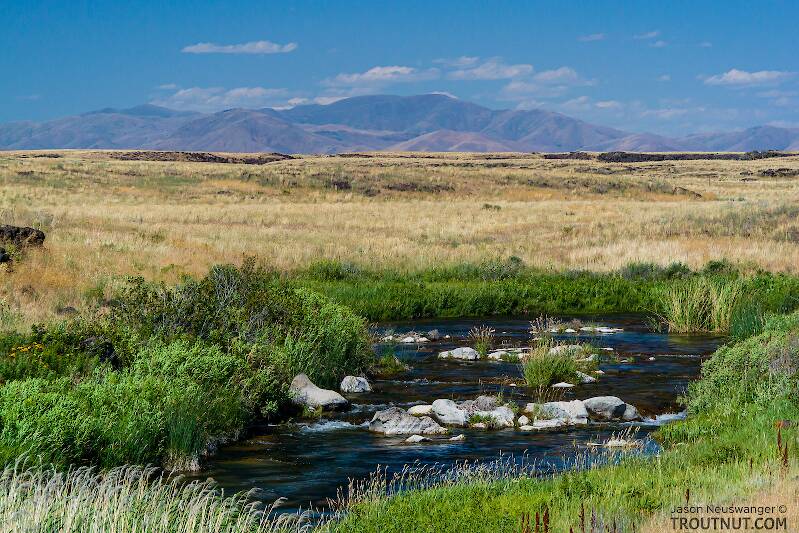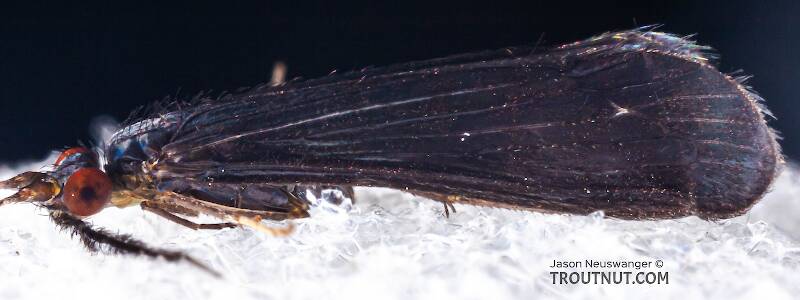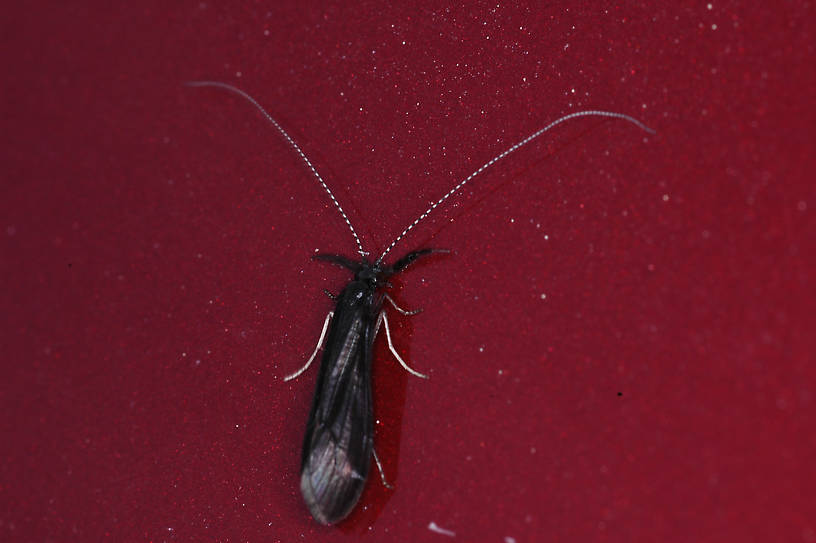
Blue-winged Olives
Baetis
Tiny Baetis mayflies are perhaps the most commonly encountered and imitated by anglers on all American trout streams due to their great abundance, widespread distribution, and trout-friendly emergence habits.
Featured on the forum

With a bit of help from the microscope, this specimen keys clearly and unsurprisingly to Hydropsyche.

Troutnut is a project started in 2003 by salmonid ecologist Jason "Troutnut" Neuswanger to help anglers and
fly tyers unabashedly embrace the entomological side of the sport. Learn more about Troutnut or
support the project for an enhanced experience here.
Caddisfly Genus Mystacides (Black Dancers)
Where & when
This genus is represented across the continent, but the Western species Mystacides alafimbriata is probably the most prominent.In 111 records from GBIF, adults of this genus have mostly been collected during June (27%), August (25%), July (24%), May (14%), and September (7%).
In 35 records from GBIF, this genus has been collected at elevations ranging from 3 to 3873 ft, with an average (median) of 1181 ft.
Genus Range
Egg-Laying behavior
Time of day: Dusk
Larva & pupa biology
Shelter type: Long, thin cases made of various debris. The case may be three times as long as the actual insect.
Specimens of the Caddisfly Genus Mystacides
3 Adults
2 Male Adults
Discussions of Mystacides
Does anyone have success fishing this hatch?
9 replies
Posted by Troutnut on Sep 24, 2006
Last reply on Jan 14, 2011 by PaulRoberts
I've been extremely frustrated several times by trout feeding on Black Dancers, especially on the Brule in Wisconsin. The flies gather in little swarms beneath overhanging alders along the bank, usually within a foot or two of the surface, and "dance" around. A trout or two, usually small, will appear below them and rise steadily.
This is one of the most reliable insect activities on that river in the summer. It's quite unlike any other hatch, since it never affects most of the stream. Instead, there are just little pockets of activity here and there along the bank. It would be interesting to see if some of the trout are Mystacides "specialists" who are conditioned to cruise the banks looking for this food source.
At any rate, I've never had much luck catching these trout. I've tried most often on the Brule but I've run across similar situations on Finger Lakes and Catskill rivers in New York, too. Has anyone cracked the code?
This is one of the most reliable insect activities on that river in the summer. It's quite unlike any other hatch, since it never affects most of the stream. Instead, there are just little pockets of activity here and there along the bank. It would be interesting to see if some of the trout are Mystacides "specialists" who are conditioned to cruise the banks looking for this food source.
At any rate, I've never had much luck catching these trout. I've tried most often on the Brule but I've run across similar situations on Finger Lakes and Catskill rivers in New York, too. Has anyone cracked the code?
Start a Discussion of Mystacides
References
- LaFontaine, Gary. 1981. Caddisflies. The Lyons Press.
- Swisher, Doug and Carl Richards. 2000. Selective Trout. The Lyons Press.






